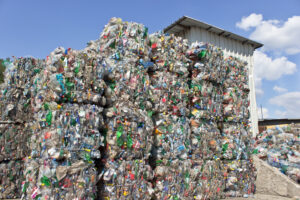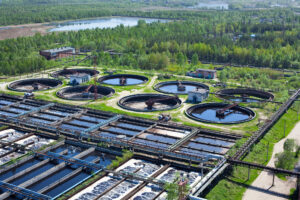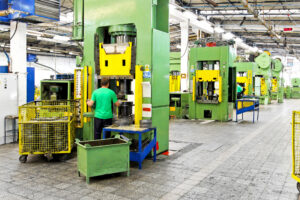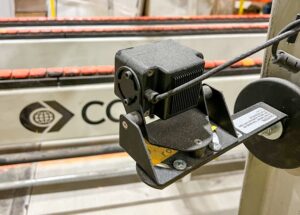Opticom cameras are a vital component in the operations of sawmills, helping to monitor and ensure the smooth flow of work. Our cameras are built to last, do their job well, and hold up to vibration and a beating. Having said that, proper maintenance on the part of sawmills is essential to keeping Opticom cameras running at their best.
In this blog post, we’ll explore some practical tips on how sawmills can extend the lifespan of their Opticom cameras and avoid unexpected downtime.
The Importance of Camera Care
Opticom cameras last a long time, even in the harsh environment of a sawmill. However, they still benefit from some cleaning and maintenance for several reasons:
- Clear video images: Regular cleaning ensures that the cameras capture the clearest and sharpest images, allowing for effective monitoring.
- Extended camera life: Proper maintenance can extend the lifespan of your cameras, saving you money in the long run.
- Reduced unexpected downtime: Regular maintenance helps prevent unexpected camera downtime and operational disruptions.
Let’s look at a few maintenance tips.
Clean Your Cameras’ Lens Covers
Opticom cameras are built to protect the sensitive lens and electrical components inside the casing.
But as with anything in a sawmill, the outside of a camera, including the lens cover, is exposed to dust and debris. One common issue—with any camera in a sawmill—is the accumulation of pitch on camera lens covers, which can be challenging to clean and may affect a camera’s visual output.
To address this problem, sawmills can clean each camera’s lens cover regularly. Some sawmills do this cleaning when they notice the video feed is not optimal, while others clean each camera on a regular schedule.
When choosing a cleaning solution, carefully read the instructions to understand its effect on plastic components—some solutions may make plastic cloudy, which would defeat the purpose of cleaning. In our testing, we’ve had good luck with Goo Gone. Make sure to remove all the Goo Gone residue when the lens is clean to ensure a crystal-clear video feed.
Depending on the camera’s location and purpose, you’ll have options for cleaning:
- Clean the lens while the camera is mounted, ensuring safety for the person doing the cleaning
- Unmount the camera, clean it immediately, and remount
- Unmount the camera, put in a replacement one (see the next section), and clean the dirty camera before marking that as a replacement
Sometimes, cleaning the lens isn’t enough. In that case, there are other options.
Keep Extra Parts and Cameras on Hand
If a camera lens cover is irredeemable and cleaning won’t cut it, you can still keep your Opticom sawmill video monitoring system up and running.
If the only issue with an Opticom CC02 camera is that its lens cover is dirty to an uncleanable level, we do sell replacement lens covers—part number CC02-REP-LEX. If your mill uses CC02 cameras and the lenses take a beating, we recommend keeping several of these lens covers on hand at all times.
Tips to replace an Opticom CC02 lens cover:
- Inside the front cover, unscrew the old lens cover and insert the new one. Ensure that the two O-rings are properly in place.
- Here’s a tip from one of our sawmill experts: When replacing lens covers, to get the O-rings back in place, tip the camera upside down and screw in the lens cover in your palm. If the camera is placed sideways, the lens may slide down.
- Throw away the old lens cover, test your camera’s visuals, and remount it back in the mill or put it in your replacement stock.
In addition to lens covers, we recommend having extra cameras on hand—this applies to all cameras, not just the CC02. Then when one camera needs to be cleaned, another can be mounted in its place, and operations stay up and running just like usual. Sawmills we work with that keep extra cameras on hand have been happy that they do—it’s worth it to keep the line up and running even if a camera needs repaired, cleaned, or replaced.
Protect Camera Wiring During Install
Oftentimes, when something is wrong with the camera feed, it comes down to the wiring or something else outside of the actual camera. So to protect your mill from camera feed issues, we recommend you pay close attention during installation to avoiding excessive pressure on the wiring harness.
To protect the wiring harness from potential damage, place it inside some form of conduit. And if an Opticom camera feed has issues, be sure to check the wiring.
What You Don’t Have to Worry About With Opticom Cameras
Opticom cameras are built to handle the sawmill environment, even being right up close and often mounted right on machinery. The outside of the camera will inevitably get dirty, but the interior of the camera is well-protected thanks to its construction, including neoprene O-rings that keep moisture and dust out.
Opticom cameras last for years inside sawmills. If you don’t use Opticom cameras and the ones you use are failing within 1-3 years of install, it’s a sign you need a better solution.
The Bottom Line
Opticom cameras are built to last, but like anything else, cleaning and maintenance can go a long way in helping ensure they stay running at their best for years. Some sawmills have implemented smart cleaning and maintenance practices for their Opticom cameras and other equipment, including:
- Regular exterior camera and lens cover cleaning
- Checking and maintaining wiring to ensure proper connectivity
- Keeping replacement lens covers on hand for quick replacements
- Having extra cameras on hand to rotate in while others are being cleaned
Opticom cameras play a crucial role in the smooth operation of sawmills, and their maintenance is essential to ensure their longevity and optimal performance. By following the tips outlined in this blog post, sawmills can effectively maintain their cameras, avoid unexpected downtime, and ensure the quality of their surveillance systems.
Since our founding in 1973, we’ve been building rugged products that last, even in the harshest environments. Just like products made back then, our built-to-last cameras need to be taken care of. Our grandparents took good care of their possessions back in the day to help things last longer, and sawmill cameras deserve the same attention to help them keep running for years and even decades inside harsh mills.
Curious about camera cleaning, or interested in an Opticom sawmill video monitoring system? Let’s talk.







